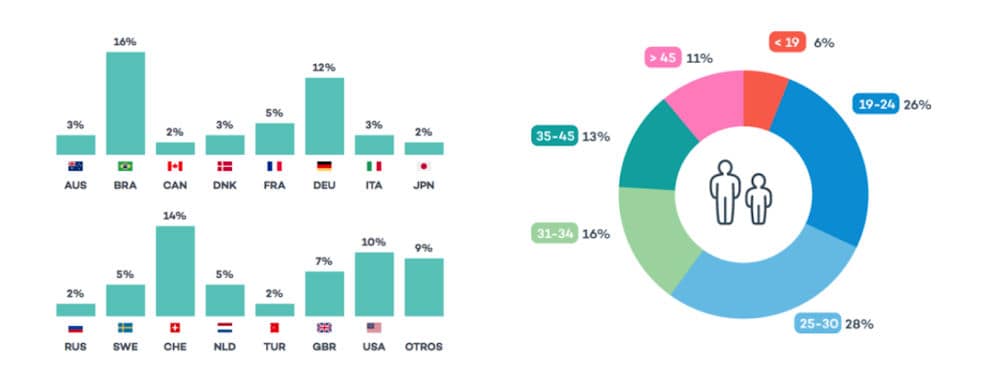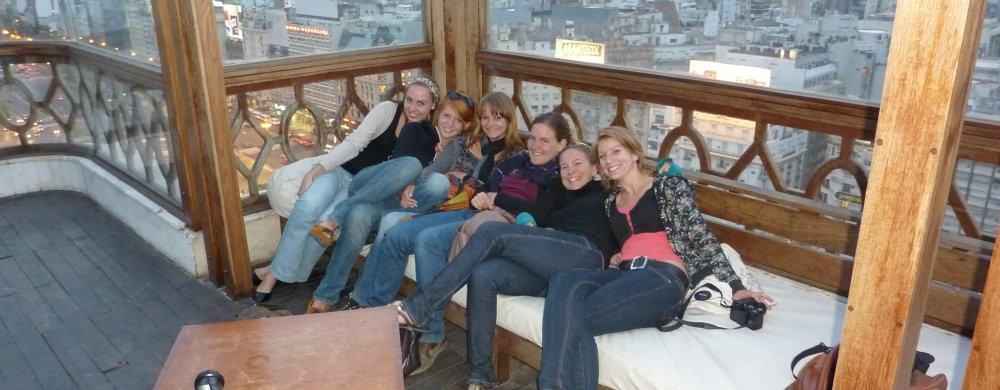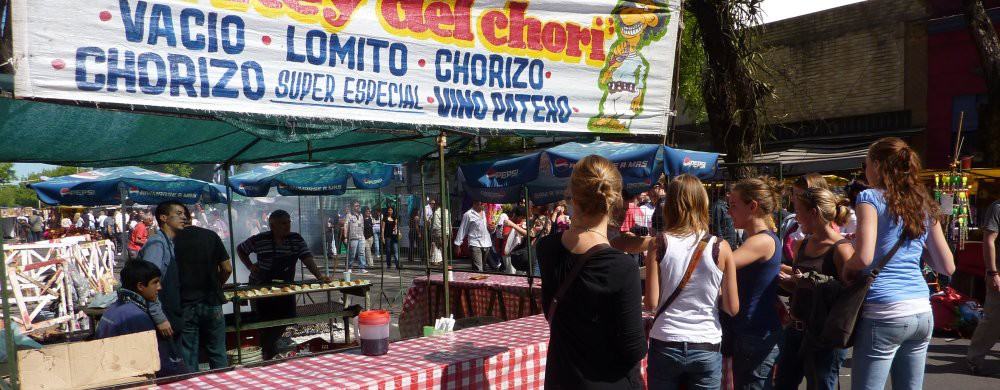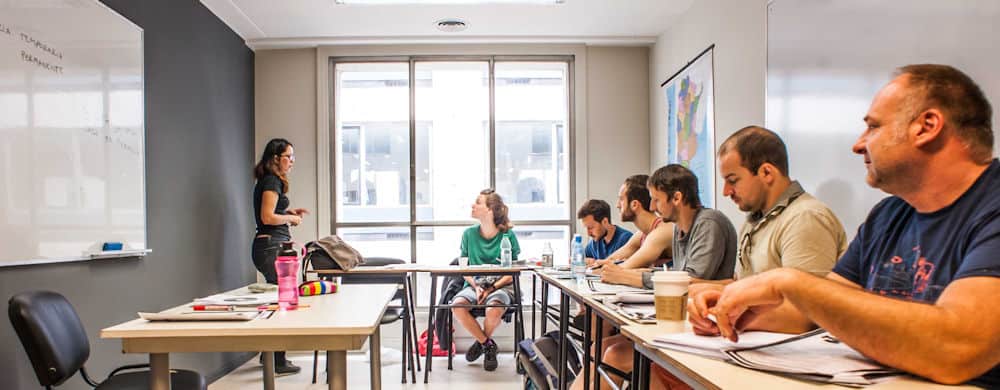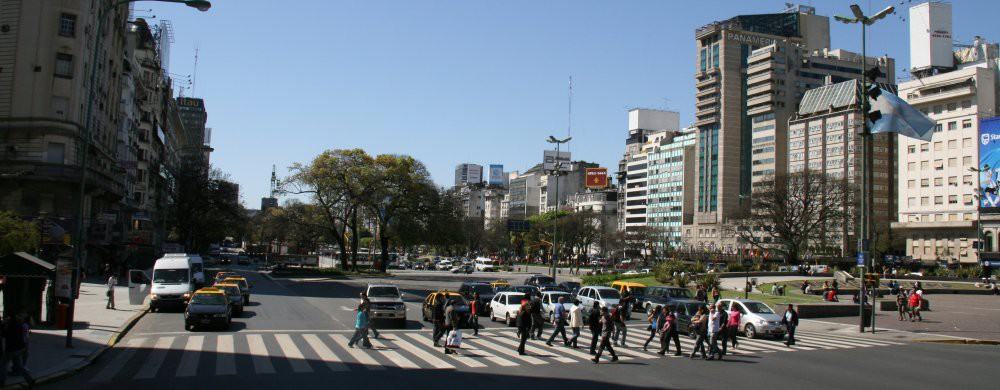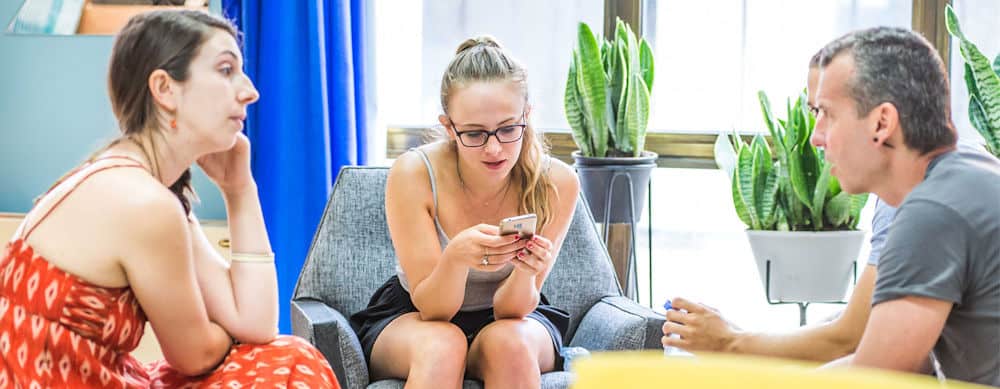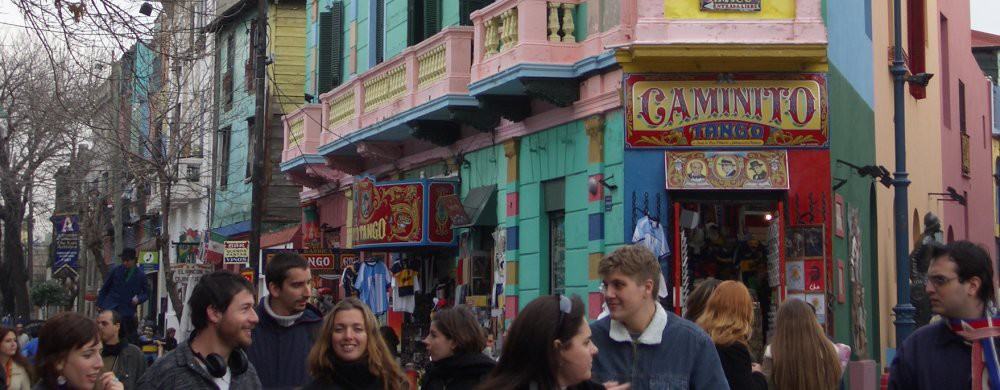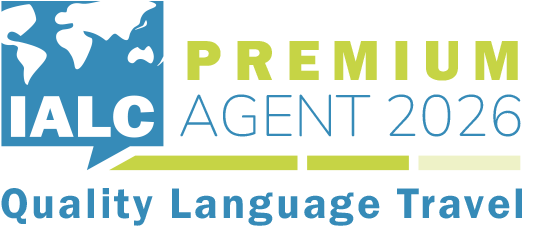Learn Spanish in Buenos Aires: Teaching
Spanish language courses meet a wide range of general language needs across a broad range of linguistic abilities and are intended to help you achieve a variety of communication goals according to your current level of ability. Their great flexibility allows you to learn the Spanish language according to your needs and time (multiple levels, flexible start dates, variable course lengths and intensity).
The main priority is to get you to communicate in Spanish!
Ability Level Assessment
| Written Test: | Students are asked to take a test prior to arrival, so that school staff have an idea of your level and can make preliminary plans for groups for your first week. |
| Oral Test: | On arrival you will be involved in a short conversation with a teacher – to assess your oral ability and confidence. This will be used to confirm or alter your class placement by the teaching staff. |
First Day
| Oral Test: | Students have a short oral assessment prior to class placement |
| Orientation Chat:
|
On the first day of class, school staff will provide you with useful information (programme and class details and tourist info on Buenos Aires) and arrange a short orientation chat, that includes information about Spanish classes, activities, excursions, and Buenos Aires in general. This is followed by a talk on safety tips for travelling in the city, best practices for using public transportation, exchanging money, accessing a local SIM card, and a breakdown of the neighborhoods in Buenos Aires. |
Class materials
The Spanish school have their own textbooks (no additional fees). Additionally teachers will provide material from everyday life (newspapers, CDs, internet, movies, etc.) alongside the textbook tasks, to ensure lessons are relevant and interesting.
End of Course Certificate
A certificate is provided on completion of your programme, stating the level you reached.
Levels and groups
To guarantee adequate progress, it is vitally important that students are placed in a group that corresponds with their knowledge of Spanish. This is only possible if the language school guarantees groups of all levels of learning. After making a careful initial evaluation of each student’s ability, the School follows up their placement with regular control testing.
Class Size
The smaller your learning group, the more personalized your course. Generally there are 6 to 7 students per class, but the school allow a maximum of 12 students per class.
Class Duration
The staff start classes punctually. At the school, lessons run from Monday to Friday and are 50 minutes long.
Timetables
| Standard Course | ||
| Sunday | Arrival in Buenos Aires | |
| Monday | Tests – Lessons | |
| Tuesday/ Friday |
AM timetable: Lessons 09.00 hrs to 12.50 hrs 10.30 hrs/ 20 mins break 11.50 hrs/ 20 mins break |
PM timetable: Lessons 14.00 to 17.50 hrs 15.30 hrs/ 20 mins break 16.50 hrs/ 20 mins break |
| Lunch | 12.50 – 14.00 hrs | |
| Intensive Course – extra classes | ||
| 14.00 / 15.50 hrs | 11.00 / 12.50 hrs | |
| Saturday | Excursion or free day | |
| Sunday | Generally a free day | |
Please note:
Choice of AM or PM timetable is determined by school staff according to student language levels, rather than student choice.
| Timetable for Private Tuition: |
| Variable |
Teaching Methods
Teaching approach:
The teachers use the communicative method of teaching, which prioritizes the continual use of Spanish to ensure maximum progress across all areas in language improvement. Each students is encouraged to speak as much as possible, and actively interact with their teacher and each other in the classroom, in a variety of contexts. Classroom work covers a range of topics; Argentine culture, current affairs, sports, art, dance, business, and human rights etc. The Spanish teaching methods in Buenos Aires are designed to ensure language advancement for every student in a comfortable, communal atmosphere to ensure learning is an enjoyable as possible.
Four Key Skills
Spanish classes focus on the development of four key language skills: speaking, writing, reading and listening. These skills are addressed through a variety of exercises, practical applications, small group activities, class discussions, and multimedia interactions. This helps students gain proficiency in the language by helping them capitalize on all areas of language development through constant use, rather than learning by rote.
Rate of Progression
Students will work their way through the various levels of Spanish acquisition; from A1 (Beginner) to C2 (Master of Proficiency). At each stage the teachers offer a flexible approach, and adapt the classroom dynamic to meet the needs and abilities of the individual student group. The speed of advancement is determined by group development, to maximize language acquisition in the time allotted, to allow for the most efficient progression to the next level.
C2 – Master of Proficiency
Student is able to easily understand practically everything he/she hears or reads; knows how to reconstruct information and arguments from various sources and present them in a coherent and summarized way.
C1 – Advanced
Student is able to understand complex texts and recognize implicit meanings. Student can make effective use of the language for social, academic and professional purposes; can produce clear, well-structured and detailed texts on complex topics.
B2 – Upper Intermediate
Student is able to understand the main ideas of complex texts; can produce clear and detailed texts on various topics as well as defend a point of view on general topics by indicating the pros and cons.
B1 – Intermediate
Student is able to understand the main points of basic texts in standard language; is capable of producing simple and coherent texts. Student knows how to handle most situations that may arise during a trip.
A2 – Elementary
Student can communicate during simple and daily tasks with simple and direct exchanges of information on issues that are well-known or habitual. Student can describe his/her past, physical surroundings, and immediate needs in simple terms.
A1 – Beginner
Student is able to understand and articulate frequently used everyday expressions as well as simple phrases designed to satisfy immediate needs.
Buenos Aires Teachers
All of the teachers are native Spanish speakers and they are all full time Spanish teachers (generally 25 to 45 yrs of age). There are 8/12 teachers in the school throughout the year, all trained to teach Spanish as a foreign language.
Buenos Aires Spanish Students
Students come from all over the world, from Europe and North America, but also from as far afield as Australia, China, Japan and Russia. Fundamentally, if you want to learn Spanish – you’re welcome. Age wise there a lot of young adults (18 yrs to 34 yrs of age), but the oldest student to date was in their 70’s and some 30%+ of the student body last year were over 35 yrs of age, so everyone is welcome.
There are students that stay for one or two weeks and others who stay for 12 to 16 weeks+. The longer you stay the better your Spanish language skills will be!
